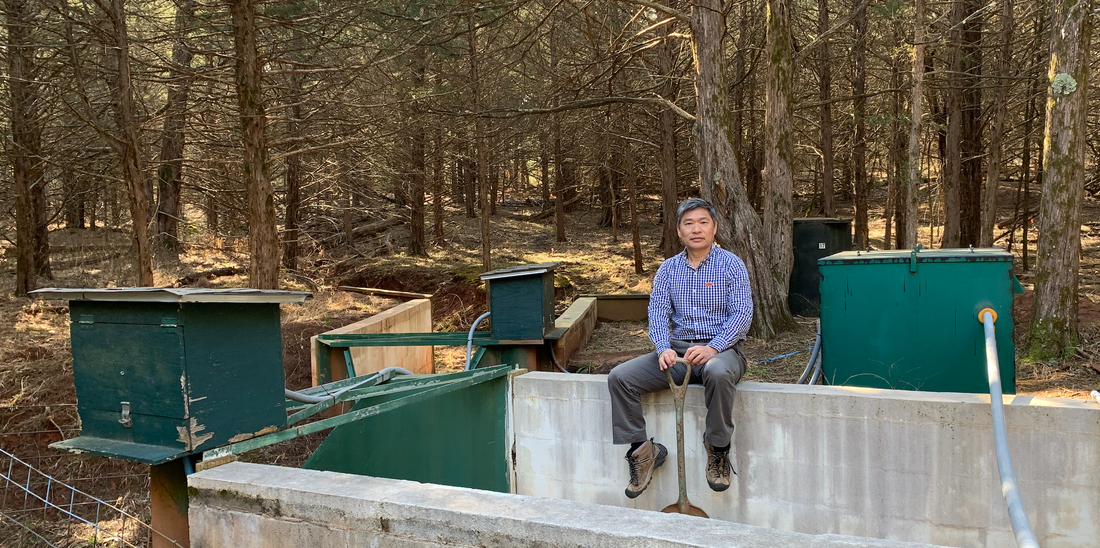In natural resource and ecosystem management, ecohydrology incites a new way of thinking and disbands the disciplinary boundary of biotic and abiotic focus. The framework and the name illustrate the interdisciplinary nature and importance of understanding the interactive nature and feedback loops among the ecological processes and water in or influenced by any ecosystem.
What are your undergraduate and graduate degrees in?
I earned my degrees in Biology (1985) and Plant Ecology (1988) from Southwest University (China). After spending years working in the subalpine forest ecosystem in the eastern margin of Tibet, I returned to graduate school studying plant and soil interaction in the context of forest ecology and management and obtained my Ph.D.(2000) from the University of Canterbury, New Zealand.
How did you arrive at working in/thinking about ecohydrology?
Dr. Steve Archer at Texas A&M University hired me as a postdoc soon after my dissertation defense. I worked on an NSF-funded project to understand the mechanisms underlying the woody plant-driven cluster and patch dynamics in the south Texas savanna parkland. We installed hundreds of soil psychrometers and spent years measuring plant ecophysiology to piece together the elusive interaction among stochastic rainfall input, soil moisture, and species-specific performance of co-occurring shrub and tree species. After digging deep into the ecosystem's dynamic mechanisms, we started to think about its external impact, such as water balance. I recalled many exciting discussions with Dr. Brad Wilcox, our wildland hydrologist, across the hallway, which secured me a seat on the van to the 2002 Chapman conference on ecohydrology which I still think started many discussions and debates that have largely shaped ecohydrology as we see it today. My experience working with Dr. David Breshears at the University of Arizona further shaped my ecohydrology view.
What do you see as an important emerging area of ecohydrology?
Dr. Zhang at CSIRO (8/24/2020 LEAF) said this very well. One important emerging area of ecohydrology is the coupling of carbon and water at various spatial and temporal scales. Forests are near and dear to many of us. In water-abundant, humid regions, reforestation can increase carbon sequestration and "flat the curve" of the hydrograph, reducing flood risk. However, the impact of afforestation on carbon and water budget can switch from both positive to a tradeoff. The cost of water and effects on other ecosystem services can outweigh the benefit when the region becomes semiarid and arid. Improved understanding of the complex interaction among climate, ecosystem productivity, soil processes, and water availability for non-ecosystem application remains an area of theoretical and applied interest.
Do you have a favorite ecohydrology paper? Describe/explain.
It isn't easy to nail down a paper. Still, Huxman et al. (2005) "Ecohydrological implication of woody plant encroachment" and Jackson et al. (2005) "Trading water for carbon with biological carbon sequestration" are must-reads for students in my ecohydrology class. Woody plant encroachment, widely observed, is an excellent example of illustrating the interactive effect of the ecological process and the water cycle. The existence of a trade-off between two vital ecosystem services (carbon sequestration and water availability for non-ecosystem use) should be a guiding principle for natural resource managers in the vast semiarid and subhumid ecosystems.
What do you do for fun (apart from ecohydrology)?
I enjoy fishing and staying close to the water whenever time and weather allow (and I am not traveling). I also regularly spend time gardening, listening to music and audio books, playing card games with friends, and following the Federal Badminton Tournament, in no particular order.

 RSS Feed
RSS Feed